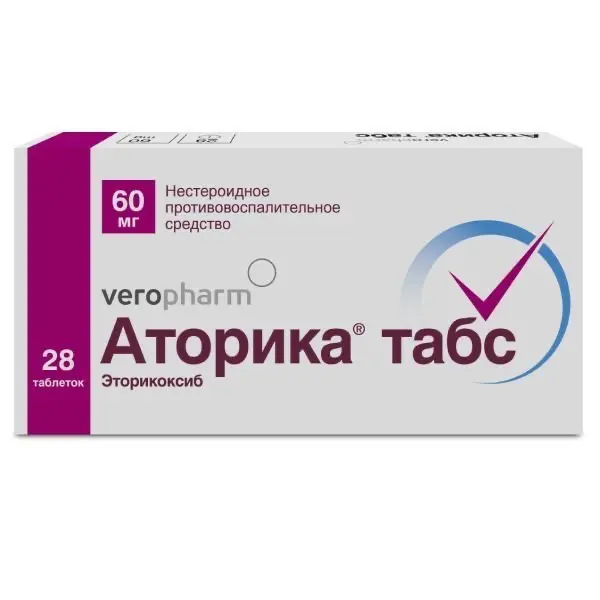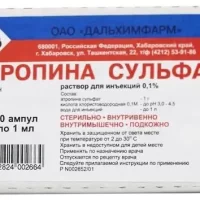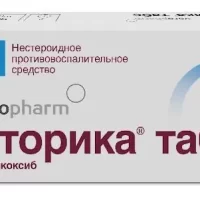Description
Diclofenac Pharmacodynamics
Non-steroidal anti-inflammatory drug (NSAID), a derivative of phenylacetic acid. Diclofenac has anti-inflammatory, analgesic, antiaggregant and antipyretic effects. By indiscriminately inhibiting cyclooxygenase 1 and 2 (COX1 and COX2), it disrupts arachidonic acid metabolism, reduces the amount of prostaglandins in the inflammation focus. It is most effective for pain of inflammatory nature.
In rheumatic diseases the anti-inflammatory and analgesic effect of diclofenac contributes to a significant reduction in the severity of pain, morning stiffness, joint swelling that improves the functional state of the joint. In injuries, in the postoperative period diclofenac reduces pain and inflammatory swelling.
Indications
Symptomatic treatment of musculoskeletal system diseases (rheumatoid arthritis, psoriatic arthritis, juvenile chronic arthritis, ankylosing spondylitis (Behterev’s disease); gouty arthritis, rheumatic soft tissue lesions, osteoarthritis of peripheral joints and spine, including radicular syndrome, tendovaginitis. bursitis).
The drug relieves or reduces pain and inflammation during treatment, while not affecting the progression of the disease.
Pain syndrome of mild to moderate severity: neuralgia, myalgia, lumboishyalgia. post-traumatic pain syndrome accompanied by inflammation, post-operative pain, headache, migraine, algodysmenorrhea, adnexitis. proctitis, toothache.
Contraindications
Hypersensitivity to diclofenac and any other components of the drug;
– Complete or incomplete combination of bronchial asthma, recurrent polyposis of the nose and sinuses and intolerance to acetylsalicylic acid or other non-steroidal anti-inflammatory drugs (including anamnesis);
– Erosive-ulcerative changes of the mucous membrane of the stomach or duodenum, active gastrointestinal bleeding;
– Inflammatory bowel disease (ulcerative colitis, Crohn’s disease) in the acute phase;
– The period after coronary artery bypass surgery;
– III trimester of pregnancy, period of breastfeeding;
– Confirmed chronic heart failure (II-IV functional class according to NYHA classification);
– Clinically confirmed ischemic heart disease;
– Peripheral artery damage or cerebrovascular disorders;
– Increased risk of arterial thrombosis and thromboembolism;
– Uncontrolled arterial hypertension;
– Blood disorders, hemostasis disorders (including hemophilia);
– Severe hepatic insufficiency or active liver disease;
– Severe renal insufficiency (creatinine clearance less than 30 ml/min); advanced renal disease;
– Confirmed hyperkalemia:
– Lactose intolerance, lactase deficiency, glucose-galactose malabsorption (the drug contains lactose);
– Childhood under 14 years of age.
Dosage and administration method
- Dosage of the drug is adjusted individually, and in order to reduce the risk of side effects it is recommended to use the minimum effective dose, if possible, with the shortest possible treatment period according to the purpose of treatment and the patient’s condition.
- Tablets should be swallowed whole with fluids, preferably before meals. The tablets should not be divided or chewed.
- Adults and adolescents from 14 years of age. The recommended dose is 100-150 mg/day. The daily dose should be divided into several doses. For relief of nighttime pain or morning stiffness, in addition to taking the drug during the day, diclofenac can be used as rectal suppositories before bedtime; the total daily dose should not exceed 150 mg.
- In primary dysmenorrhea daily dose is adjusted individually; usually it is 50-150 mg. The initial dose should be 50-100 mg; if necessary, it may be increased to 150 mg/day during several menstrual cycles. The drug should be started at the appearance of the first symptoms. Depending on the dynamics of clinical symptoms, treatment may be continued for several days.
- For treatment of rheumatoid arthritis daily dose may be maximally increased up to 3 mg/kg (in several intakes). The maximum daily dose should not exceed 150 mg.
- Elderly patients (≥65 years)
- Adjustment of the initial dose in patients aged 65 years or older is generally not required. However, based on general medical considerations, caution should be exercised in frail elderly patients or patients of low body weight.
- Patients with cardiovascular disease or high cardiovascular risk
Particular caution should be used in patients with cardiovascular disease or high risk of cardiovascular disease. If prolonged therapy (more than 4 weeks) in such patients is necessary, the daily dose should not exceed 100 mg. - Patients with impaired renal function No data on the need to adjust the dose when using the drug in patients with impaired renal function due to the lack of safety studies on the use of the drug in patients of this category. Caution should be exercised when using the drug in patients with impaired renal function.
The drug is contraindicated in patients with renal failure (creatinine clearance less than 30 ml/min) (see section “Contraindications”). - Patients with liver dysfunction. There is no data on the need to adjust the dose when using the drug in patients with liver dysfunction of mild to moderate severity due to the lack of safety studies of the drug in this category of patients.





